Archives 2016
The Road from Reality to Stage Magic
It was a long while before when I last felt as deliberated, elevated and (let me say) “happy” as during the last year festival in Kisvárda. I enjoyed the productions staged by Hungarian theatres outside Hungary, and I was impressed that any drama workshop seemed to be consistent to their special approaches. Self-identification is the term that I would describe them with after the professional discussions which proved to be great opportunities to talk sincerely with the companies and the creators about the professional ups and downs. Hungarian theatres outside Hungary are organic parts of their countries’ (Romania, Slovakia, Serbia, Ukraine) “majority” theatrical cultures, they pay attention to them, acknowledge their efforts and regularly work together with Romanian, Serbian, Ukrainian and Slovakian artists. Whatever the political situation is like in these countries, there is co-operation in cultural life among theatres. And it should be like this since a Hungarian living outside Hungary is born into two (or sometimes even three) cultures, therefore is familiar with not only the majority’s language, but also knows its habits and cultural values. These days most of the actors of theatres have become relatively young adults since the changes in the political system and there has been a healthy generational change in the managements of theatres as well. Youthful spirit, open-mindedness, curiosity and willingness for co-operation is palpable in the repertories of these theatres and networks. The Kisvárda Festival attempts to be an arena, parade and meeting point for this extremely rich, constantly renewing, dynamic world of theatres.
I similarly enjoy taking part in Romanian theatrical festivals. I regularly go back to Bucharest for the national festival, unfortunately I can more rarely attend other festivals such as the ones in Sibiu, Craiova and Timisoara. I have very often had the impression in Romanian festivals that even the weaker productions are still professionally competent and the performances with concrete political messages are unbiased. In my opinion cultural life in Romania is very sound, the productions show our world and the most current issues in a very creative and adequate way to our age. Although there maybe extreme values in politics or civil life, however, the world of theatres come up with creations at a different level, at the intellectual level suiting the mentality of culture and defines itself, we must say: in a very rewarding way. In the middle of the last century after the second world war Romanian theatres started off from the same level as any other theatres in the neighbouring countries. The communist ideology based system did not make a favourable impact on creativity in Romania, neither did it in any other countries belonging to the Eastern bloc. In the middle of the 1950-s a dialogue was initiated among theatre people for the “retheatralisation” of theatres. Liviu Ciulei published his essay with the title The Theatralisation of Stage-Setting in the Teatrul (Theatre) periodical in 1956, in which he expressed his preference of poetic-dramatic stage-setting instead of sticking to reality. At that time he was a young actor, also architect, he started to work as a director in the theatre and became famous throughout Europe. Ciulei and his contemporaries, directors in theatres and films were revolting against imitated naturalism and demanded that a director should be creative, a style-setter and fond of experimenting. “The intention of creating everything leads straight to the limitations of the audience’s imagination in the art of the theatre. The creative professional expertise mostly lies in the ability of how by grabbing one element of the whole that one bears in mind and while relying on the supplementary imagination of the audience he is able to make allusions.”[1] In a few years’ time under his direction the Bulandra Theatre had become the most promising art theatre in Romania, with an excellent company and directors (David Esrig, Lucian Pintilie, Radu Penciulescu). Ciulei regarded it as relevant to renew the stage as well as the theatre halls in order to achieve an even more intense relationship between the audience and the actors. Owing to his initiative, one of the stages at Bulandra Theatre was converted into a space that could be adapted to each individual play. While Ciulei primarily took responsibility for creating a perfect, almost a picture-like stage setting, David Esrig was rather interested in staging an intense and statuesque show, while Lucian Pintilie attempted to combine the previous two methods in a very dynamic way basing it on the requirement for theatrical truth. It was also typical of the generations of directors following them that they tended to take advantage of every opportunity to undermine the complexity of potential expressions in a theatre, which may have resulted in continuous experiments with expressive forms even within one director’s life.
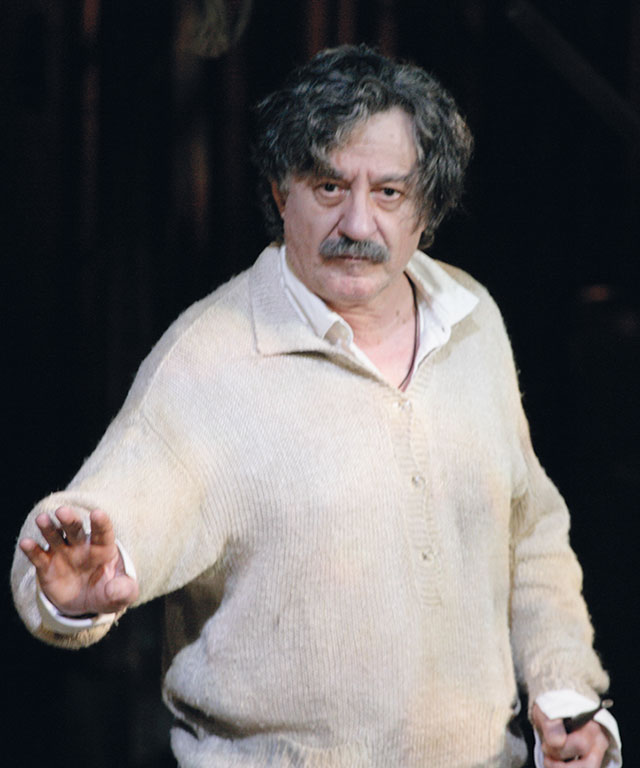
in the role of Prospero, at MITEM 2015, Budapest (photo: Augustine Bucur)
It demonstrates the multiplicity of Romanian theatres that in every town that has a theatre, festivals are organised mostly with foreign participants. Several festivals had been held traditionally even before the political system was changed (eg. Romanian drama festival in Timisoara, studio theatre festival in Oradea), but most of them were started later. The most prominent festival for Romanian theatres, the FNT (Festivalul National de Teatru-National Festival of Theatres) has been organised for 25 years in Bucharest by UNITER (Uniunea Teatrala din Romania, the Theater Union of Romania), which was established in the first year of the new political system.
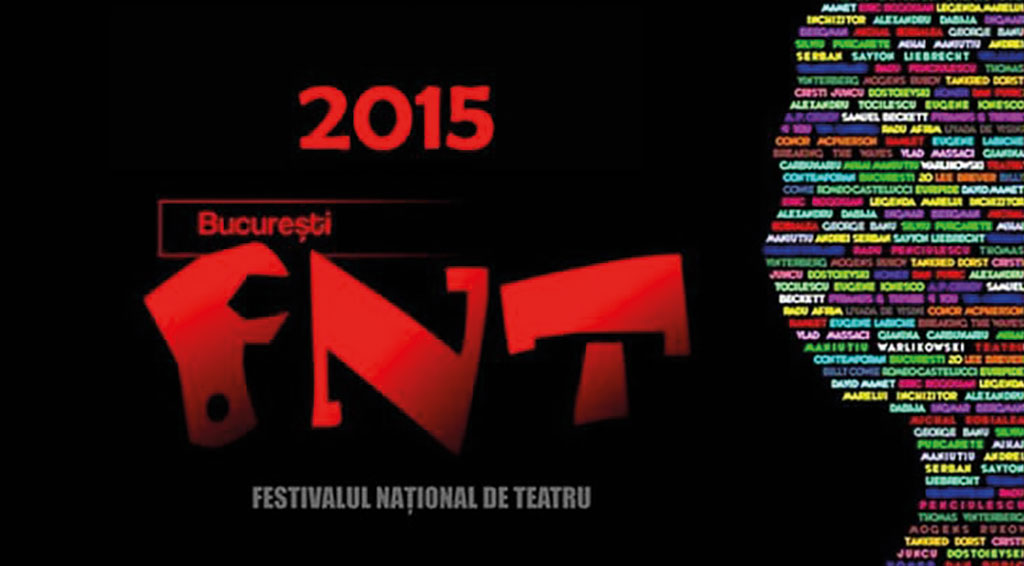
The UNITER is so independent and professional that its members are not the institutions but the individuals who work for theatres. This union is managed by Ion Caramitru, who is one of the most significant Romanian actors, performing artists and directors; he is responsible for the complexity of its structure that covers every aspect of theatrical life, its whole operation, and last but not least it is also his merit that it has become such a respectable association that he also found a venue and sponsorship for. Currently Caramitru acts as the director of the National Theatre. He has had the building of the Bukarest National Theatre renovated, as a result of which perhaps the most enormous theatrical complex of Europe can be found at the heart of the Romanian capital. The UNITER sets up a great gala event annually (which is broadcast by the main Romanian television channel) and presents the professional awards of the year based on the opinions of a great number of well-reputed professionals in an environment intentionally made to bear a comparison with the Oscar award winning ceremony. It also refers to the complexity of Romanian theatres that besides the usual awards for the productions (best performance, director, actor, designer) the most outstanding theatrical shows on radio and television and the best critic of the year are also acknowledged. Life achievements award, special awards, awards for productions in circuses, children’s theatres and puppet theatres are also handed out. Awards are given for best choreography, the composition of theatre music, or prominent achievements in the musical theatre. The best drama of the year also receives an award. The nationwide festival has become a real celebration of the best performances of the year without a jury and awards. In the autumn of 2015, the director and editor of the 25th jubilee festival was Marina Constantinescu, who invited more than as usual, altogether forty performances –including two representative foreign ones (one German and one Russian) to the capital. She said the following about her task of picking the participant for the festival: “Travelling around Romania to select productions for the FNT I had the impression of experiencing the phantasmagoria of the country. It was lively and motionless, European and provincial, modern and conservative at the same time. I have seen a Romania that basically hardly anybody ever talks about. And very few people are interested in what is happening there. I have rediscovered that the way from reality to fiction that one may experience in a theatre is the sign of normality. This is the way to our real selves. Theatre is about what we live through intensively and variably, about the country and the present moment of history.”
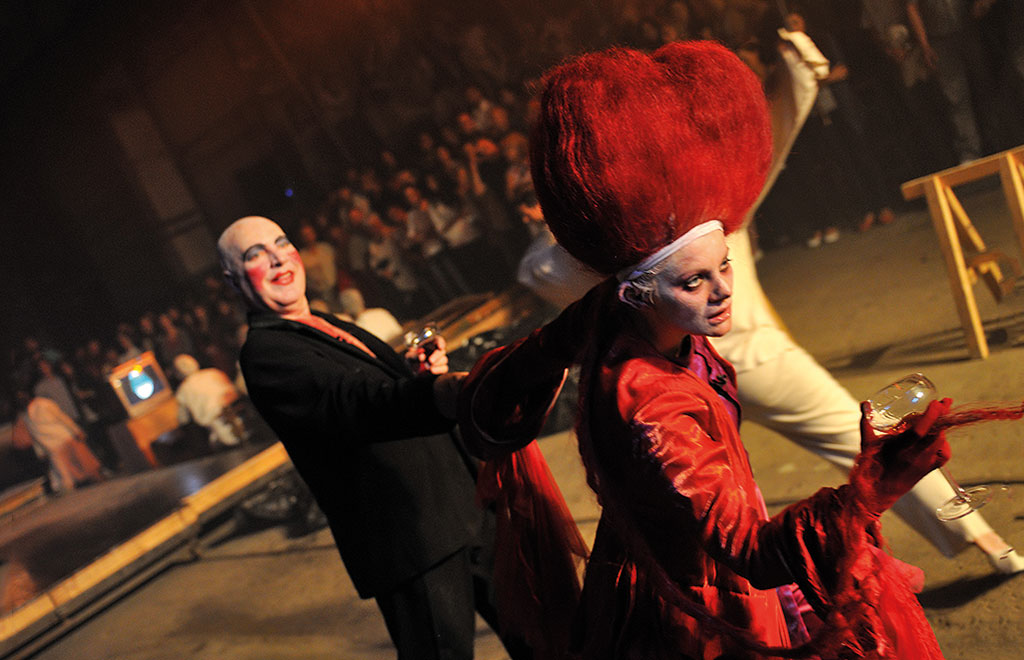
The greatest festival of theatres in Romania is undoubtedly the one held in Sibiu, which was organised for the first time twenty-two years ago, then eight productions were invited from three countries. By 2015 it had become a megafestival representing all kinds of arts with the participation of seventy countries and four hundred and twenty-six events at sixty-six locations. Constantin Chiriac, the theatre and festival director, who also turned out to be an excellent manager, was able to make even his boldest dreams come true. By today due to the international reputation of the festival eighty per cent of its budget is provided by international co-operations and European Union funds. Productions by renown personalities of the world theatre (Eimuntas Nekrosius, Peter Stein, Lev Dogin, Krystian Lupa, Declan Donellan, Oskaras Korsunovaras) can be seen here, furthermore, world famous Romanian theatre personalities stage shows in co-operation with the local company of Sibiu. Just to mention a few examples, Faust by Purcarete, the Metamorphoses, and quite recently Gulliver’s Travels were staged here and these performances were crowned with success all around the world from England to Japan. The festival in Sibiu features a wide range of events (street theatres, dances, concerts, exhibitions, productions staged by universities of acting, a fair of shows) and I would also like to highlight professional conferences, reading theatres and book presentations. Even the first few festivals offered reading shows at theatres, and the contemporary plays presented here were printed in bilingual books. Later conference materials which were based on the presentations of serious experts were also printed out, then since 2006 the festival organisers have had a lot of prominent foreign theatre books translated and published in co-operation with Romanian publishing houses.
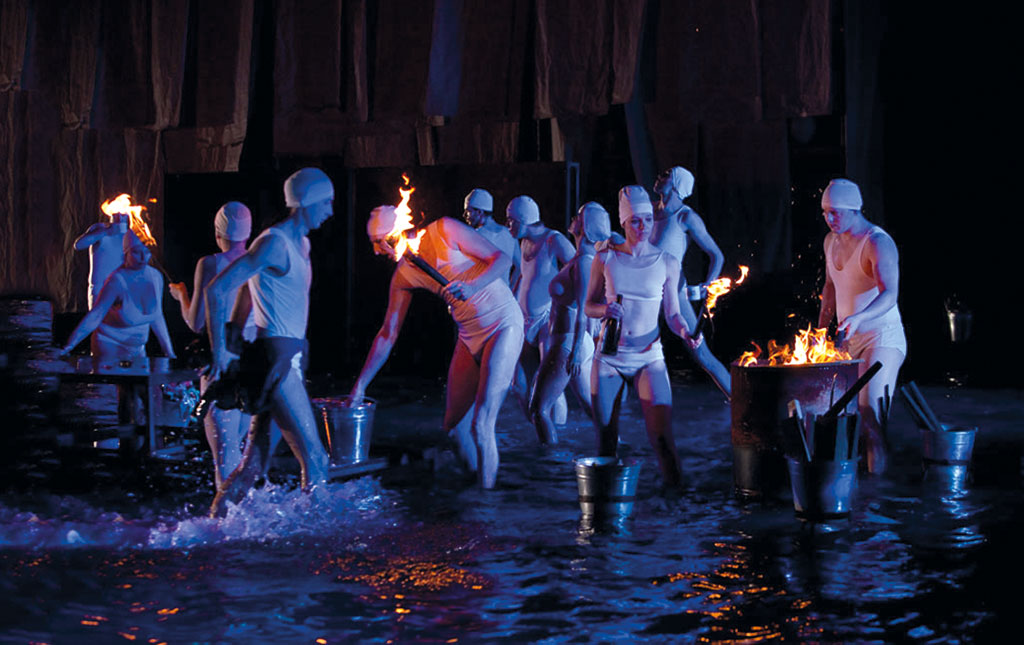
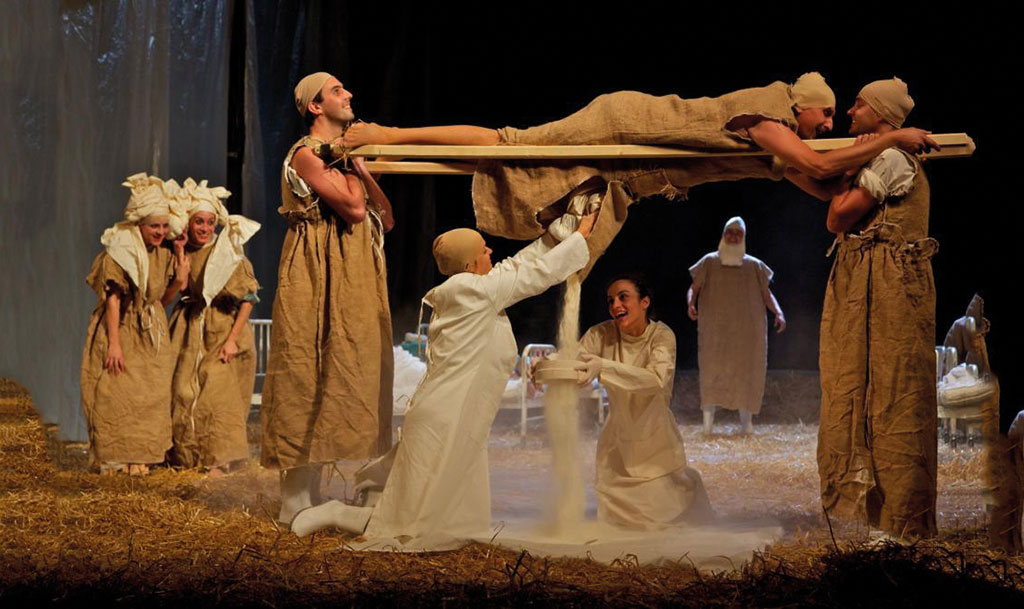
The first piece of the series was a book by the famous Russian critic Marina Davidova under the title of The End of a Theatre Epoch (Konyec tyeatralnoj epohi), which examines the current situation of the Russian theatre. In 2015 two books – My Paris (Parisul personal), which is the second part of his autobiographical essays, and another book about the Japanese theatre were published by George Banu, the well-known critic and writer in Paris; the dictionary for theatres under the title of 1001 definitions of Theatre (Les 1001 définitions du Théâtre) by French playwright and director Olivier Py as well as a bilingual book (Sfârșitul regiei, începutul creației colective în teatrul european-The End od Directing. The Beginning of Theater-Making and Devising in European Theatre) in which essays and interviews can be found about trends in alternative theatre-making in Romania and Europe. A festival is always organised around an important and current topic, such as tolerance, aggression, cultural identity, creativity, energies, communities, crisis, dialogue, individualism in multiplicity. The festival in 2016 is advertised with the slogan Building Trust.
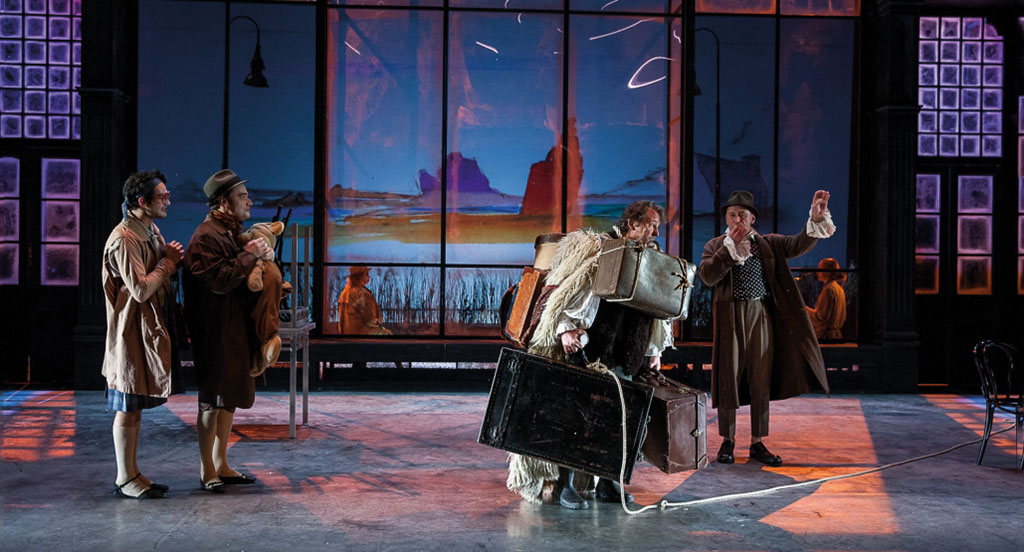
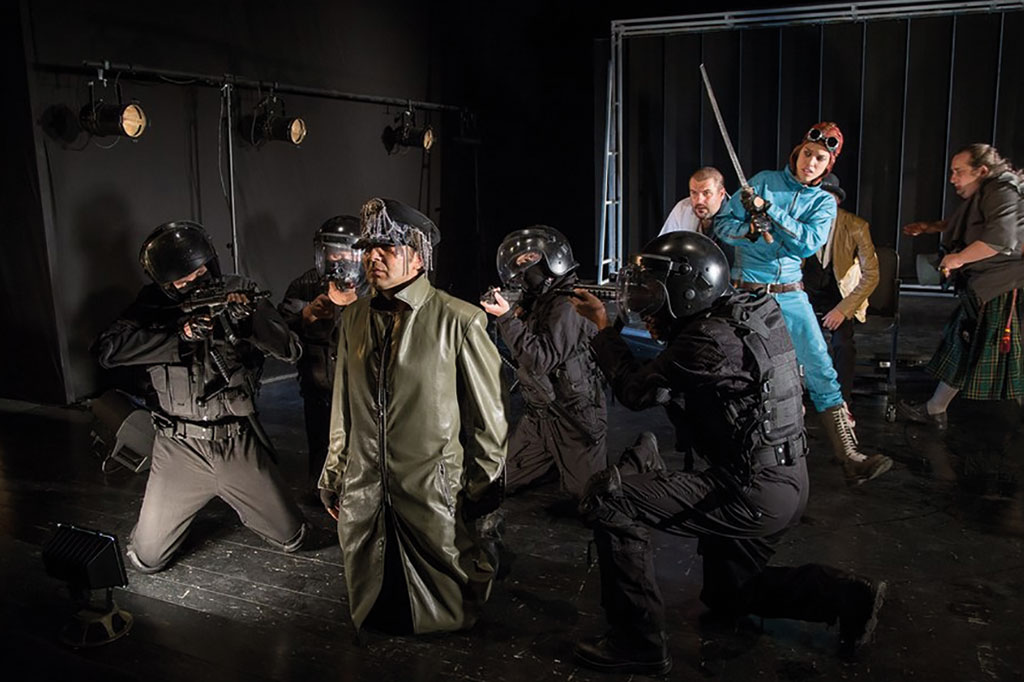
d: László Bocsárdi (photo: Zsolt Barabás, source: mitem.hu)
Our relationship with the Romanian theatre is regarded as very important. It was a very special occasion for the company of the Budapest National Theatre when it had an opportunity to co-operate with Silviu Purcăreté and his excellent colleagues[2] and MITEM features Romanian productions in its programme every year. The National Theatre Bucharest has been invited twice to Budapest, during the first festival they staged play by the legendary Romanian playwright, Caragiale, while on the second occasion Ion Caramitru in the role of Prospero was celebrated by the enthusiastic audience in Budapest. This year a very exclusive production is invited, which was a coproduction of the Sibiu Theatre Festival and the prestigious Edingbourg Festival in 2012, and ever since has become sweeping success all around the world: Gulliver’s Travels. Silviu Purcărete’s theatrical vision is the “grand version of grotesque”, “the pictures are very often shocking, however, always memorable” – as the English critics noted it regards to the tour of the production in England. The other Romanian performance in the 2016 MITEM is by Hungarian director, László Bocsárdi, who is ranked among the best directors by Romanian theatre experts, too. Bocsárdi with his drama group from Szepsiszentgyörgy (Sfanthu Gheorghe) had an overwhelming success when they showed Moliere’s The Misanthrope to the Budapest audience. This year they are staging a Shakespeare masterpiece, the Twelfth Night, after Hamlet, with a leisurely approach… Two years ago Bocsárdi was awarded the best director by UNITER for staging Hamlet, at the same time the best production award went to Silviu Purcărete’s production in Cluj-Napoca. It is quite obvious that in the Romanian theatre the main propelling force is the liberty of creativity.
Edit Kulcsár: The Road from Reality to Stage Magic
A Close-up of Hungarian Theatres Outside Hungary and Theatres in Romania
In the present paper Edit Kulcsár, dramaturge at the Nemzeti Színház (National Theatre), expert on Romanian theatre as well as Hungarian-language theatres across the border, gives an overview of the most important theatre festivals in Romania. She highlights the significance of the intellectual fermentation which began at the end of the fifties, due to which theatre (in the Romanian and Hungarian languages) in Romania reached international standards after the end of the communist regime. Finally she sums up which productions and professional programmes indicated the presence of this theatre culture at the earlier two MITEMs and, also, who the invited guests are going to be at this year’s festival: Silviu Purcărete and Gulliver’s Travels as well as László Bocsárdi and his staging of Vízkereszt (Twelfth Night).
[1] Liviu Ciulei: The retheatralisation of stage (Translated by Mária Albert) http://www.jatekter.ro/?p=9558
[2] Silviu Purcărete directed As You Like It by Shaespeare in 2014 in the National Theatre; with scenic designer Helmut Stürmer, composer Vasile Şirli, customs designer Dragoş Buhagiar.
(15 April 2016)











